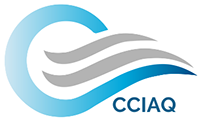iaq guides
List and details of IAQ resource guides:
Module 1 – Introduction to Indoor Air Quality
The Guide for Indoor Air Quality was developed by the Canadian Committee on Indoor Air Quality (CCIAQ). Additionally, the guide is a series of written modules intended to help building designers, owners, operators and managers. Moreover, it gives guidance on avoiding and correcting indoor air quality (IAQ) problems, and maintaining acceptable IAQ.
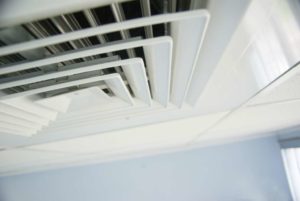 This first module introduces IAQ terms and concepts, as an aid to understanding and applying the modules that follow.
This first module introduces IAQ terms and concepts, as an aid to understanding and applying the modules that follow.
In this guide we have described Sources of IAQ problems, along with the factors that affect air quality: sources of pollutants; heating, ventilation and air conditioning; contaminant pathways; and building occupants. Also, we’ve considered the practical effects of meeting or falling short of the standard. Furthermore, this is based on a standard definition of what ‘acceptable IAQ’ means.
To help understand how you can manage a building’s air system, we used a simple equation to explain how various IAQ factors relate to each other. In addition, this leads to descriptions of six basic IAQ control strategies: management of contaminant sources, air exhaust to the exterior, ventilation, control of exposure to contaminants, air cleaning, and education of building occupants.
Module 1 includes a list of definitions and abbreviations. As with all the modules, it concludes with links to references and additional information.
You can download Module 1 for free here:
Module 2 – Volatile Organic Compounds (VOC)
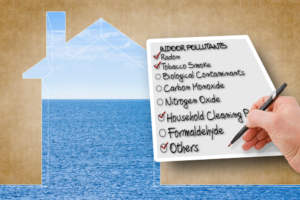 We have introduced a “source-pathway-receptor” model for assessment of potential volatile organic compounds sources, of ventilation and of cleaning. Then, we have given a process for deciding whether sampling would help in checking VOC controls.
We have introduced a “source-pathway-receptor” model for assessment of potential volatile organic compounds sources, of ventilation and of cleaning. Then, we have given a process for deciding whether sampling would help in checking VOC controls.
Sampling is described for use various activities. They include building commissioning, best-management practices (including assessment and control during renovation or construction activities), regulatory compliance, and investigating occupant complaints.
Guidance is given on when and where to sample for VOCs, and how the types of VOCs and the building environment can affect strategies. In addition, a flowchart shows how to work from goals to choosing a strategy. Example goals include complying with regulations, and fixing problems. We’ve described sampling methods for real-time monitoring, as well as active and passive sampling. Furthermore, we offered suggestions for choosing a consultant, and on laboratory accreditation.
There are many practical lists (with references and links), including: best-management practices; occupational health and safety regulations; commonly-encountered VOCs and sources; sample guidelines for managing VOCs; complaint patterns and sampling; effects of building age on sampling; effects of site factors on VOC sampling and analysis; and accreditations commonly used by Canadian labs.
You can download Module 2 for free here:
Module 3 – Custodial Activities, Maintenance, Repair and Renovation for Indoor Air Quality
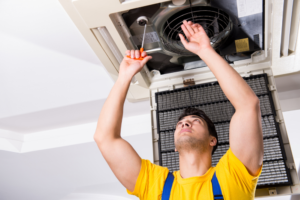 The importance of good IAQ is described, along with a list of typical contaminant sources. A checklist is provided that covers the elements of an effective IAQ plan. We’ve described effective cleaning procedures, covering dusting and dust mopping, entryways, floor and carpet care, restrooms and greenery.
The importance of good IAQ is described, along with a list of typical contaminant sources. A checklist is provided that covers the elements of an effective IAQ plan. We’ve described effective cleaning procedures, covering dusting and dust mopping, entryways, floor and carpet care, restrooms and greenery.
Recommendations are given for selecting cleaning products for various tasks, such as general cleaning, de-greasing and deodorizing. We’ve given guidance on measuring, diluting and storing cleaning products. Also, we’ve described building management practices that can affect IAQ. These include janitorial equipment, smoking areas and the storage of hazardous materials. In addition, we have considered effective maintenance and cleaning methods for heating, ventilation and air conditioning systems. These include duct cleaning and the replacement of filters.
We’ve examined the impacts of repairs and renovations on IAQ. In addition, we have given guidelines for hazardous materials (such as radon and asbestos). We have discussed ways to handle problems caused by moisture, such as mould. We have given suggestions for selecting adhesives, sealants, paints, carpeting and other materials. Additionally, we have provided a checklist that you can use to track strategies for reducing emissions.
You can download Module 3 for free here:
Module 4 – Recognizing and Addressing IAQ Problems
 Complaints from building occupants can be a significant help in detecting, locating and diagnosing compromised IAQ. We have given guidance on how to handle IAQ complaints, including a sample complaint form and an investigative process. Also we listed typical sources of contaminants, along with factors that can affect IAQ, such as chemicals and ventilation flaws. We described effective communication with occupants, as well as the effects of IAQ on health.
Complaints from building occupants can be a significant help in detecting, locating and diagnosing compromised IAQ. We have given guidance on how to handle IAQ complaints, including a sample complaint form and an investigative process. Also we listed typical sources of contaminants, along with factors that can affect IAQ, such as chemicals and ventilation flaws. We described effective communication with occupants, as well as the effects of IAQ on health.
The module’s second half gives advice on dealing with IAQ problems. There are instructions for an effective walk-through inspection of the building. A checklist covers items to look for, such as contaminants, faults in the building and its systems, and occupant activities. A second checklist offers ideas on causes and possible effects. For example, widespread symptoms among occupants may indicate a problem that is spread by the building’s ventilation system.
In case you need a more thorough assessment, we’ve given steps for evaluating the building’s heating, ventilation and air conditioning system. Also, we described the pathways and sources of pollutants, as well as methods for air sampling. There are recommendations on determining solution to problems, and on where and how to seek outside help, if it is necessary.
You can download Module 4 here for free here:
Module 5 – Hygienic Operation of Air-Handling Systems
The fifth module of the CCIAQ’s Guide for Indoor Air Quality is intended to help building managers operate air-handling systems with acceptable indoor air quality (IAQ).
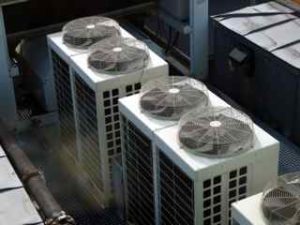 An initial ‘Background’ section provides a schematic diagram of a typical building’s heating, ventilation and air-conditioning (HVAC) system. And describes maintenance standards for it.
An initial ‘Background’ section provides a schematic diagram of a typical building’s heating, ventilation and air-conditioning (HVAC) system. And describes maintenance standards for it.
The bulk of this module consists of sections describing the operation, inspection. And maintenance of the 11 general components of an HVAC system. These include outdoor air intakes, mixing plenums and mechanical rooms, filters, cooling and heating coils, condensate pans, humidifiers, fans, supply ducts, compartmental or terminal air-handling units, return air plenums and return air risers, and controls and building automation systems. Also each section includes a checklist. Additionally, these offer practical points and questions to consider during inspection and maintenance of the particular component.
The module concludes with a description of parameters used to test and monitor an HVAC system. Moreover, these include temperature, relative humidity, ventilation rate, concentrations and contaminants.
You can download Module 5 for free here:
Module 6 – Scent-Free Buildings
Building operators looking for information about the sources and effects of scents can consult the sixth module of the CCIAQ’s Guide for Indoor Air Quality. The module also describes ways to help operators work toward making scent-free buildings.
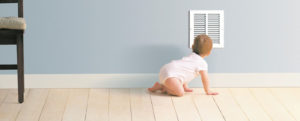 There is no standardized definition of ‘scent-free.’ Instead, the module gives examples of personal products that are scented, such as perfume and deodorant. Building operations may also introduce scents, intentionally or unintentionally. An example noted is cleaning products used by custodial staff.
There is no standardized definition of ‘scent-free.’ Instead, the module gives examples of personal products that are scented, such as perfume and deodorant. Building operations may also introduce scents, intentionally or unintentionally. An example noted is cleaning products used by custodial staff.
We listed common symptoms experienced by people with sensitivity to scents. Starting with this context, we also considered Canadian legal and policy requirements and recommendations for scent control. We have given suggestions for policies and standards for scent-free buildings, along with a checklist for developing the policies. Also we included a list of sources for further information on scent-free policies.
An appendix provides two examples of organizational scent-free policies. One is from the Government of Newfoundland and Labrador and the second is from the Thunder Bay District Health Unit.
You can download Module 6 for free here:
Module 7 – Communication With Tenants
 The building blocks and benefits of good communication are given. Important considerations include knowledge of the building, who is responsible for what tasks, and providing suitable documentation. We have covered what the building operators should tell the tenants, and what the tenants should tell the operators. We described methods for effective communication in both directions, including ways to assess how successful communications are, and making improvements.
The building blocks and benefits of good communication are given. Important considerations include knowledge of the building, who is responsible for what tasks, and providing suitable documentation. We have covered what the building operators should tell the tenants, and what the tenants should tell the operators. We described methods for effective communication in both directions, including ways to assess how successful communications are, and making improvements.
When IAQ problems occur, good communication about the situation is important for operators and tenants. The investigative process for IAQ problems introduced in module 4. We extended Recognizing and Addressing IAQ Problems, to include aspects of good two-way communication.
We have given suggestions for specific types of building situations, such as schools and offices. The module includes sample forms for IAQ roles and responsibilities, and problem tracking, as well as a checklist for an IAQ communications plan.
You can download Module 7 for free here:
Module 8 – Creating a Building IAQ Profile
 First, steps are given for getting ready to create the profile. These include considering sources of IAQ problems generally. And the features of the building and its design that can affect IAQ. We explored needed skills for those who will be actively working in preparation of the IAQ profile. As well as advice on the advisability of hiring external professionals to help.
First, steps are given for getting ready to create the profile. These include considering sources of IAQ problems generally. And the features of the building and its design that can affect IAQ. We explored needed skills for those who will be actively working in preparation of the IAQ profile. As well as advice on the advisability of hiring external professionals to help.
We presented a detailed process for the actual creation of the profile itself. Also we covered the three major steps necessary at length:
- collecting and reviewing existing records;
- inspecting the building, inside and outside;
- documenting IAQ factors such as the heating, ventilation and air conditioning system, pollutant pathways and sources, and the building’s occupancy.
We have given details for all the tasks necessary, using diagrams and lists. In addition, we added many tips and examples to help clarify the proceedings.
The final section offers advice on dealing with any IAQ problems encountered during the procedure. The module includes a wealth of sample forms and checklists to aid in preparing and analyzing building IAQ profiles.
You can download Module 8 for free here:
Module 9 – Indoor Air Quality IAQ and Energy Efficiency

We have given strategies for improving a building’s energy efficiency and IAQ. Which you can achieve by following these steps:
- understanding air supply and delivery concepts and systems;
- optimizing heating, ventilation and air conditioning equipment and systems;
- managing the building’s interior and exterior environments, such as through specific maintenance and renovation practices;
- monitoring and evaluation of building performance, with quantified focus on energy use and air quality.
Recommendations are made to adapt existing building practices, such as IAQ profiles (described in detail in module eight) and audits, occupancy, budgeting and replacement of equipment. The module concludes with notes on communications with building occupants.
You can download Module 9 for free here:
Module 10 – Strategies for Moulds and Microbiologic Agents
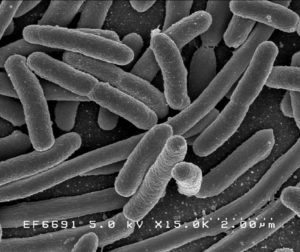 The module starts with a description of what mould is and how it grows. And the harm it can do to buildings and occupants. In addition, we’ve given strategies for avoiding mould growth. The strategies use sound design and construction practices and preventative building operation, maintenance and cleaning. Moreover, we have given particular attention to heating, ventilation and air conditioning equipment.
The module starts with a description of what mould is and how it grows. And the harm it can do to buildings and occupants. In addition, we’ve given strategies for avoiding mould growth. The strategies use sound design and construction practices and preventative building operation, maintenance and cleaning. Moreover, we have given particular attention to heating, ventilation and air conditioning equipment.
It is important to quickly recognize moulds and microbiologic agents growth that does occur. Also we’ve given detailed steps for planning and carrying out inspections. This includes considerations for staff qualification, and for effectively working with the building’s occupants.
We have listed methods for the process of removing mould. They include advice on the choice of equipment, and mechanical and chemical cleaners. Additionally, we have given a systematic classification to help decide on what work is necessary. Based on how much mould there is, and the size of the affected areas. There is a discussion of worker safety, and consideration of what to do with affected materials and the mould itself after treatment and removal.
Finally, in tandem with the earlier prevention section, we have listed ways to avoid mould growth returning after removing it. The module’s advice is made practical by providing detailed checklists for each aspect of mould management.
You can download Module 10 for free here:
Module 11 – Indoor Air Quality for Homeowners

The purpose of this Module is to provide homeowners with information about the importance of indoor air quality (IAQ), help them to establish and maintain good air quality in their homes, and to recognize and correct IAQ problems that do occur either on their own or with the help of professionals.
You can download Module 11 for free here:
Module 12 – Healthy Renovations
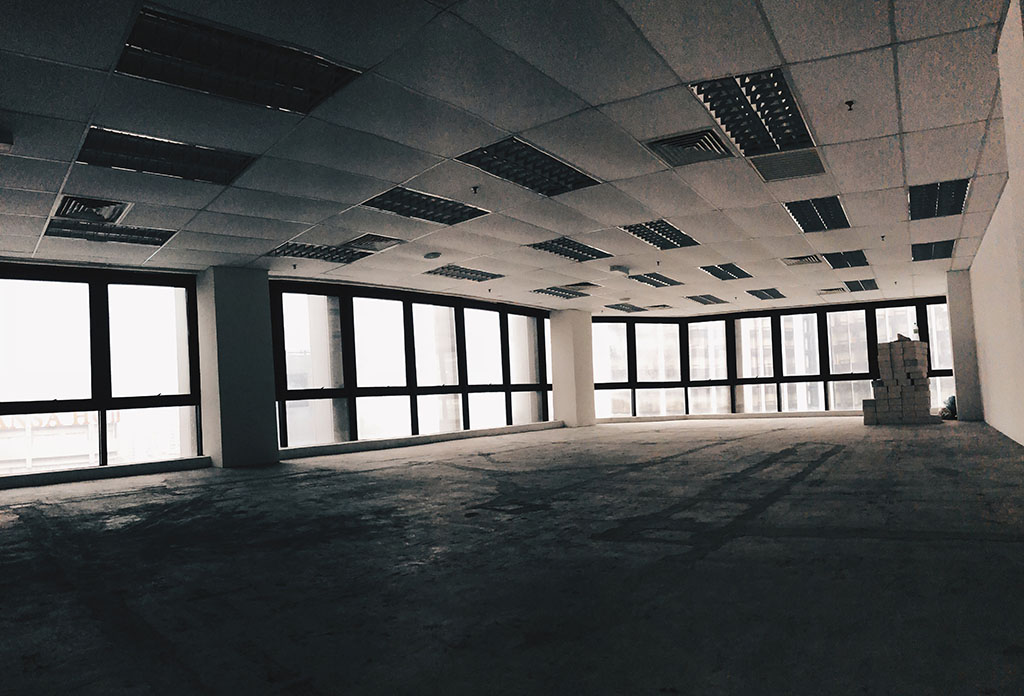
In many commercial, industrial and most health care facilities there exist health and safety regulations, standards, and guidance documents, with many relating to indoor air quality and some specifically to renovation activities. Other buildings may fall outside of such enforced rules, or other best practices may often be omitted by minor work projects or uninformed sub-contractors. As the understanding of building contaminants and occupant sensitivities increases with time, it is necessary to be aware of the possible dangers and the respective precautions that should be taken. This guide is not a repeat of codified health and safety regulations, but a reminder and resource for improving indoor air quality everywhere.
This document is part of a series of modules forming the CCIAQ Guide for Indoor Air Quality.
You can download Module 12 for free here:
Module 13 – Addressing Chemical Sensitivities
IAQ & Chemical Sensitivities
The purpose of this Module is to inform building operators, managers, occupants and visitors about the complex medical condition known as chemical sensitivities, and potential role(s) that indoor air  quality (IAQ) may play. The goal is to prevent the development and subsequent triggering of symptoms in susceptible individuals. The guide includes information and tools to assess, address and prevent potentially problematic indoor air contaminants. Communication is important, to accommodate individuals with chemical sensitivities.
quality (IAQ) may play. The goal is to prevent the development and subsequent triggering of symptoms in susceptible individuals. The guide includes information and tools to assess, address and prevent potentially problematic indoor air contaminants. Communication is important, to accommodate individuals with chemical sensitivities.
This document is part of a series of modules forming the CCIAQ Guide for Indoor Air Quality.
You can download Module 13 for free here:
Module 13 – Addressing Chemical Sensitivities
Module 14 – Indoor Environmental Quality (IEQ) and Productivity in Workplaces/ Achievement in Schools
The purpose of this guide is to inform building designers, managers, operators, educational authorities, employers, occupants and visitors about indoor environmental quality (IEQ), in relation to well-being, students’ achievement in educational settings, and workers’ productivity.
This guide is written in the context of: 1) mounting challenges resulting from extremes in weather, as designers, operations managers and others aim to improve both energy efficiency and resilience of buildings; 2) rapid advances in technology and practices to monitor and control building operations and IEQ; and 3) adaptations in response to the 2020 COVID-19 pandemic, and to reduce contagion in the built environment.
This module examines a broad range of studies on factors affecting resilience and efficiencies as they intersect with IEQ, and in turn the effects of IEQ on well-being, achievement and productivity in educational institution settings and workplaces.
You can download Module 14 for free here:
Module 14 – Indoor Environmental Quality (IEQ) and Productivity in Workplaces/ Achievement in Schools
Module 15 – Addressing COVID-19 in Buildings
 Addressing COVID-19 in Buildings is a response to the important need to support understanding and endeavours to reduce the spread of the SARS-CoV-2 While the purpose of this guide is to assist building owners, managers and operators with measures in preparation for building re-occupancy and to minimize disease transmission as Canadians return to workplaces and educational facilities, the information will be of broader interest. As knowledge about evidence-based intervention and mitigation strategies to reduce the risk of virus transmission are evolving rapidly, the CCIAQ plans updates to this document.
Addressing COVID-19 in Buildings is a response to the important need to support understanding and endeavours to reduce the spread of the SARS-CoV-2 While the purpose of this guide is to assist building owners, managers and operators with measures in preparation for building re-occupancy and to minimize disease transmission as Canadians return to workplaces and educational facilities, the information will be of broader interest. As knowledge about evidence-based intervention and mitigation strategies to reduce the risk of virus transmission are evolving rapidly, the CCIAQ plans updates to this document.
This document is part of a series of modules forming the CCIAQ Guide for Indoor Air Quality.
A new, updated version of Module 15 is available by now. You can download Module 15 for free by clicking here:
Module 15 – Addressing COVID-19 in Buildings
The spreadsheet for COVID-19 indoors transmission risk estimation (Section 7, summarized in Section 3.7) may be downloaded here.
Module 16 – Legionella Control in Building Water Systems: A Guide for Building Managers and Operators
 Legionella Management in Building Water Systems is presented by the Canadian Committee on Indoor Air Quality and is a comprehensive guide for understanding and managing the risks associated with Legionella in building water systems. This guide equips readers with essential knowledge to prevent and respond to Legionellosis outbreaks within indoor environments.
Legionella Management in Building Water Systems is presented by the Canadian Committee on Indoor Air Quality and is a comprehensive guide for understanding and managing the risks associated with Legionella in building water systems. This guide equips readers with essential knowledge to prevent and respond to Legionellosis outbreaks within indoor environments.
The module includes illustrative figures, such as electron microscope images of Legionella bacteria, graphs displaying legionellosis incidence rates, and diagrams outlining Legionella outbreak investigation processes.
Module 16 offers a comprehensive framework for understanding, preventing, and managing the risks associated with Legionella in building water systems. It equips readers with actionable insights and step-by-step guidance to develop effective Legionella water management plans, conduct routine monitoring, and respond adeptly to outbreaks. This knowledge empowers professionals to safeguard indoor environments and public health from the threats posed by Legionella.
You can download Module 16 for free here:
